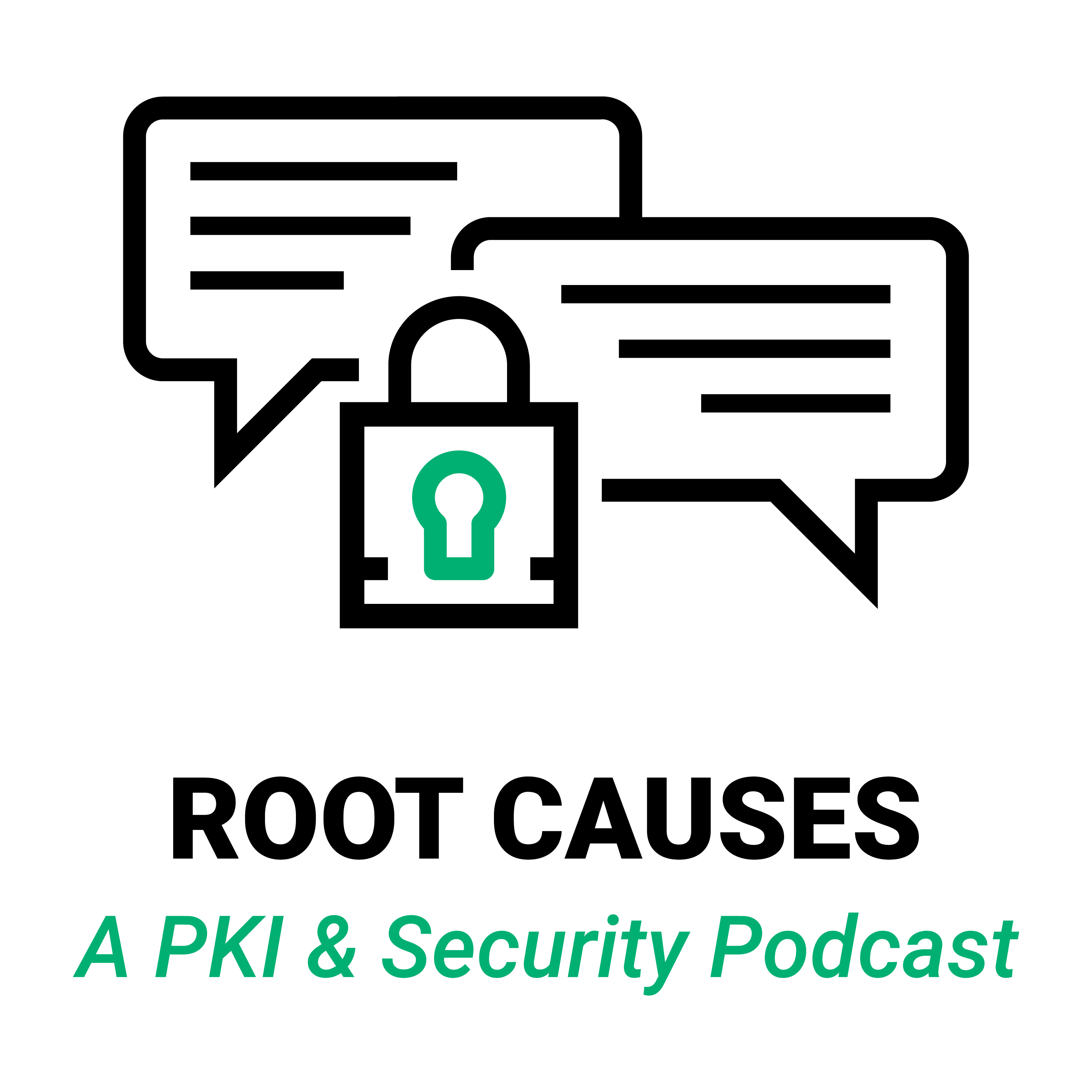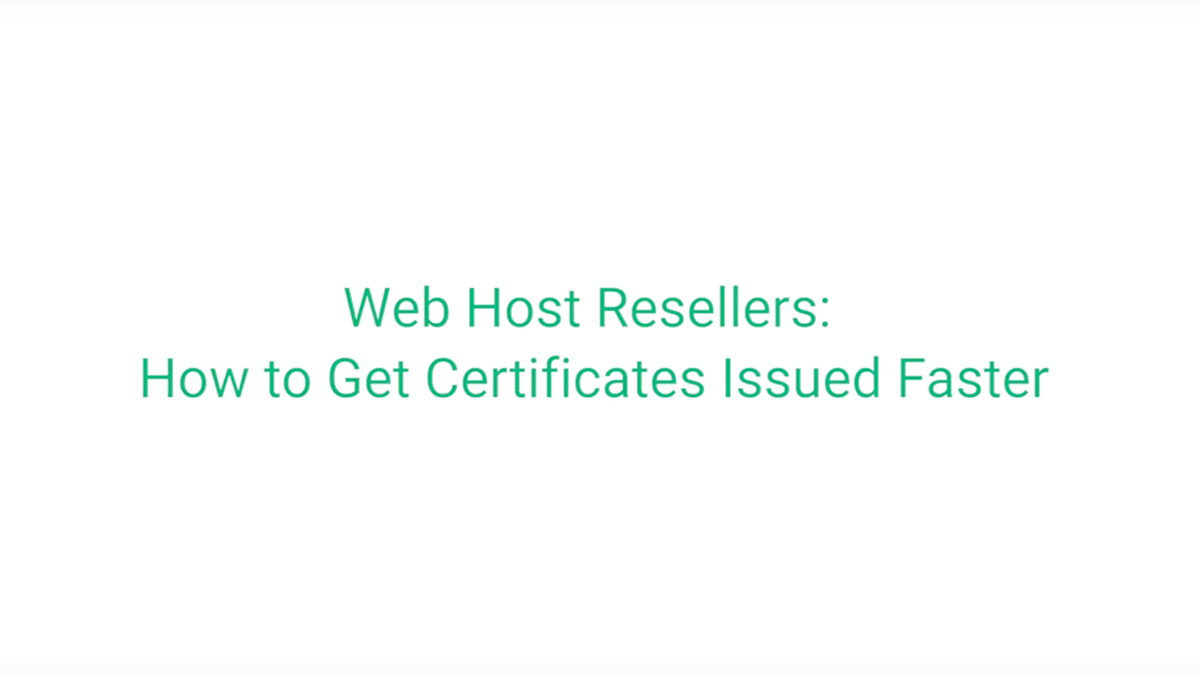-
Listen Now

EPISODE 371
Broadcast Date:
March 22, 202420 minutes
 Podcast Mar 22, 2024
Podcast Mar 22, 2024Root Causes 371: MPIC Rules Go to CABF Ballot
A ballot for Multi-perspective Issuance Corroboration (MPIC), formerly known as MPDV, has entered a discussion period in the CA/Browser Forum (CABF).
-
Listen Now

EPISODE 359
Broadcast Date:
February 2, 202416 minutes
 Podcast Feb 02, 2024
Podcast Feb 02, 2024Root Causes 359: 90-day SSL Won't Affect Organization Validation
With 90-day maximum term is coming for SSL certificates, we explain why we do not expect a reduction in the reuse period for organization validation.
-
Learn More
Modifications to Available File-Based Methods of DCV
A Blog Post from Sectigo
 Blog Post Sep 07, 2021
Blog Post Sep 07, 2021In compliance with pending policy changes by CA/B Forum ballot SC45; Sectigo will update the circumstances under which it can employ file-based DCV.
-
Listen Now

EPISODE 181
Broadcast Date:
August 30, 202113 minutes
 Podcast Aug 30, 2021
Podcast Aug 30, 2021Root Causes 181: Limitation of DCV Through Web Site Changes
Domain Control Validation (DCV) for SSL certificates using the "change to web site" method will be changing late this year. We explain these changes.
-
Learn More
Sectigo to Remove Brand Information from DV Certificates
A Notification from Sectigo
 Notification Dec 12, 2019
Notification Dec 12, 2019Sectigo recently announced that we will make a change to our issuance practices to remove “static” brand and hosting information from the OU fields of our Domain Validation (DV) certificates. These descriptors include the brand name of the certificate (e.g. “PositiveSSL”) and the name of the hosting provider (e.g. “Hosted by NAME”).
-
Learn More
How Let's Encrypt Runs CT Logs
A Blog Post from Sectigo
 Blog Post Nov 25, 2019
Blog Post Nov 25, 2019[This guest post originally ran on Let’s Encrypt’s blog on Nov 20, 2019.] Let’s Encrypt launched a Certificate Transparency (CT) log this past spring. We’re excited to share how we built it in hopes that others can learn from what we did. . . Sectigo and Amazon Web Services generously provided support to cover a significant portion of the cost of running our CT log.
-
Blog Post Oct 10, 2019
Hidden Price Tag of Free DV SSL Certificates
Learn the advantages & disadvantages of free DV Certificates, and why commercial Domain Validation Certificates are worth your money.
-
Listen Now

EPISODE 39
Broadcast Date:
September 26, 201920 minutes
 Podcast Sep 26, 2019
Podcast Sep 26, 2019Root Causes 39: New University Research on Phishing and Certificates
The majority of phishing sites now use SSL certificates to closely imitate the behavior of legitimate sites. Join our hosts as we dig into these findings.
-
Download Now
Sectigo Product Guide
A Whitepaper from Sectigo
 Whitepaper Apr 23, 2019
Whitepaper Apr 23, 2019Whether implementing a single solution or a multi-layered approach, Sectigo’s diverse range of web security products deliver a full spectrum of protection.
-
Watch Now

12 minutes
Product Video Mar 21, 2019Web Host Resellers: How to Get Certificates Issued Faster
An overview of the SSL / TLS validation process including differences for DV, OV and EV authentication levels, and causes of delayed orders.
-
Learn More
Why Do More Than 50% of Phishing Sites Use SSL?
A Blog Post from Sectigo
 Blog Post Nov 30, 2018
Blog Post Nov 30, 2018Recent research from PhishLabs shows that more than 50% of phishing sites now use SSL certificates. This fact isn’t really surprising considering that phishing sites depend fundamentally on being confused for the genuine sites they mimic. The closer the phishing site is to the actual site, the more effective it is in its mission. Adding an SSL certificate puts a lock icon and https to the web address; which in their absence, are important tip-offs that the site isn’t on the up and up.
-
Download Now
Sectigo SSL / TLS Solutions Brief
A Datasheet from Sectigo
 Datasheet Oct 30, 2018
Datasheet Oct 30, 2018Sectigo offers the full range of SSL / TLS certificates including EV, OV, DV, multi-domain, UCC, and wildcard certificates.






